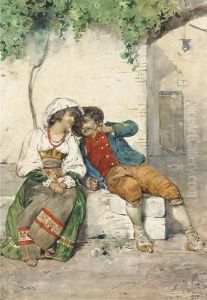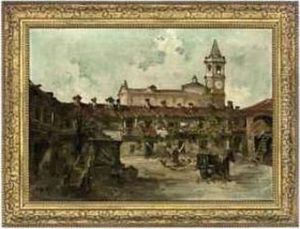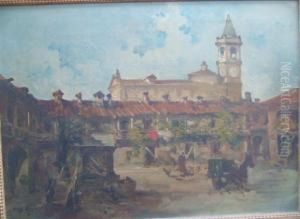Giuseppe Riva Paintings
Giuseppe Riva was an Italian painter, primarily known for his landscape and genre paintings, born in 1858 in Milan, Italy. His works are celebrated for their intricate detail, vibrant colors, and the ability to capture the essence of Italian life and scenery during the late 19th and early 20th centuries. Riva's paintings often depicted rural landscapes, urban vistas of Milan, and scenes of daily life, showcasing his keen observation and deep appreciation for his surroundings. Despite the prominence of the Italian Renaissance influencing many artists of his time, Riva managed to carve out a unique style that blended traditional techniques with a more contemporary sensitivity to light and color.
Riva's education in art began at the Brera Academy in Milan, where he studied under the guidance of prominent artists of the period. This foundational training not only honed his technical skills but also instilled in him a profound respect for the Italian artistic heritage, which would later permeate his works. Throughout his career, Riva remained deeply connected to his Italian roots, often drawing inspiration from the country's landscapes and its people. His ability to evoke emotion and narrative through his landscapes and genre scenes won him acclaim, with his works being exhibited in various galleries across Italy and Europe.
Despite his success, Giuseppe Riva remained a somewhat elusive figure in the art world, preferring the quietude of his studio and the Italian countryside to the bustling art scenes of the major European capitals. This reclusiveness did not hinder his popularity, however, and his paintings continued to captivate audiences with their beauty and authenticity. Riva's contribution to Italian art is significant, as he managed to capture a transformative period in the country's history with sensitivity and finesse. His depictions of Italy offer a glimpse into the past, characterized by a nostalgic yet timeless quality. Giuseppe Riva passed away in 1919, leaving behind a legacy that continues to inspire admiration and respect among art lovers and historians alike.



